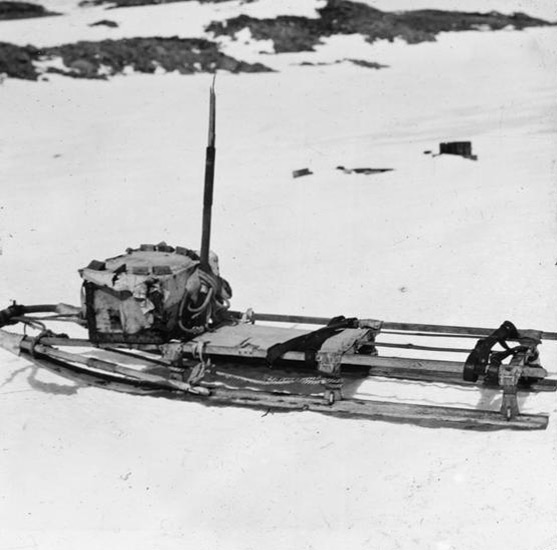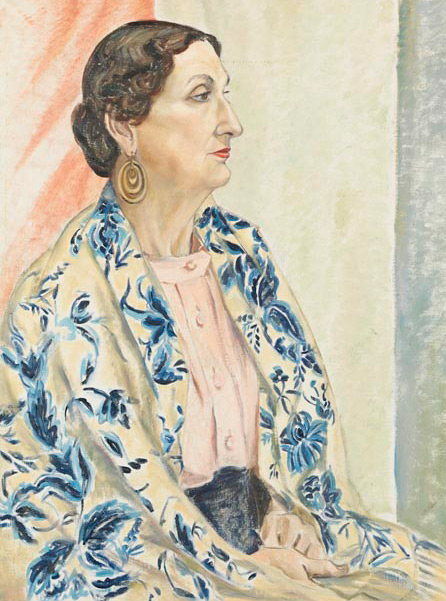Douglas Mawson
Douglas Mawson was born on 5 May 1882 in Yorkshire, England, the second son of Robert and Margaret Mawson. Looking to improve their opportunities, the family migrated to Australia when Douglas was two and settled in Rooty Hill, Western Sydney.
The young Mawson attended school at Rooty Hill before transferring to the reputable Fort Street Model School. He was an exceptionally bright student who, by the age of 16, was already enrolled in Engineering at the University of Sydney.
Following his graduation, Mawson travelled widely and began publishing his scientific findings on geology and mineralogy. In 1905, he accepted a teaching position in Petrology at the University of Adelaide and made field trips with his students to the Flinders Ranges where they studied ancient glacial rock formations.
In 1907, Mawson had the opportunity to develop his research further when he was appointed Physicist on an Antarctic expedition led by explorer, Ernest Shackleton. In Antarctica the following year, Mawson and his team were the first to scale the active volcano, Mount Erebus, and the first to reach the magnetic South Pole.
On his return to Adelaide in 1909, Mawson was still reporting his observations on the aurora and geomagnetism when plans for his second Antarctic expedition began to form.
On 23 January 1915, Mawson was quoted in the Montreal Herald Daily Telegraph following the launch of his book, Home of the Blizzard, in Canada.
Have you ever seen the midnight sun? Have you ever flirted with the penguins and beguiled them into parting with their eggs when you were hungry? Have you ever seen the snow, nothing but snow, miles upon miles, and then more miles, all around and underneath? If you ever had experienced these, and a few more attractions the Antarctic has to offer, you would not ask why I am going back.
Having received word about a second polar expedition, Mawson travelled to London to meet Captain R. F. Scott, the fated leader of the British Antarctic Expedition. Scott was unresponsive when Mawson proposed joining him to carry out scientific research and instead offered him a position on his sledging party.
Uninterested in taking part in Scott’s race to the South Pole, Mawson returned to Australia, where he launched a determined campaign to raise funds for the Australasian Antarctic Expedition (AAE).
Watch a video from the National Film and Sound Archive of the Aurora leaving Queens Wharf in Hobart.
On 2 December 1911, having finally acquired the substantial financial support required to carry out the expedition, the AAE set sail from Queen’s Wharf in Hobart, where thousands had turned out to say farewell.
The first task on arriving in Antarctica was to establish bases at Commonwealth Bay, Macquarie Island and Shackelton’s Ice Shelf. At the bases scientific work in geology, cartography, and meteorology could be carried out while the teams prepared for the summer land expeditions.
Sledging dogs from Greenland were used to transport the expedition team and their supplies. The dogs were given a curious assortment of names including Basilisk, Scott, Ginger, Shackleton, Castor, Franklin, Caruso and Grandmother.
At Commonwealth Bay, Mawson took responsibility for the Far Eastern expedition, made up of Belgrave Ninnis, Xavier Mertz and himself. Along with sixteen sledging dogs, the team set out in November 1912 on a disastrous journey from which only one man would return.
The first tragedy occurred after travelling 500kms through treacherous conditions. Ninnis, who was travelling only metres behind his companions, plunged to his death through the lid of a deep crevasse, pulling six of the best dogs and a majority of their provisions down with him.
It has been found that Mertz’s poisoning was due to the toxic effects of eating dog livers. It may have been Mawson’s larger physical build that saved him from fatal poisoning.
There were rations on the other sledge, and we found that there was a bare one and a half weeks' food for ourselves and nothing at all for the dogs. Part of the provisions consisted of raisins and almonds which had been taken as extras or "perks," as they were usually called.
Home of the Blizzard was published in 1915. You can read Mawson’s book online.
With dangerously low supplies, Mawson and Mertz began their hazardous return. Having been forced to consume their own dogs to supplement their food supply, Mertz suffered the toxic effects of Vitamin A poisoning and died twenty-five days into the return journey.
After burying his friend, Mawson cut his sledge in half and discarded everything that was not essential for survival. On this last 160 km trek, Mawson faced his own life or death ordeal, but struggled against the odds to survive the slow journey back to Main Base.
When he arrived at the hut, the first question asked was ‘Which one are you?’ His features had been so transformed by starvation and physical exhaustion that he was unrecognisable to his team. Having missed the Aurora search party by only five hours, Mawson was forced to remain another year at Main Base. Over this time, he regained his strength enough to begin writing his account of the expedition, Home of the Blizzard.
Soon after his return to Australia, Mawson married his young fiancée Paquita Delprat. With the outbreak of war in 1914, the couple travelled to London where Mawson received his knighthood, followed by the Royal Geographic Society’s Gold Medal in 1915.
In the interwar years Mawson led the British, Australian and New Zealand Antarctic Research Expedition (BANZARE) of 1929–30 and 1930–31, mapping the huge region that would later be proclaimed the Australian Antarctic Territory. He retired from the University of Adelaide in 1952.
Douglas Mawson died in 1958 and was honoured with a state funeral in Adelaide.



